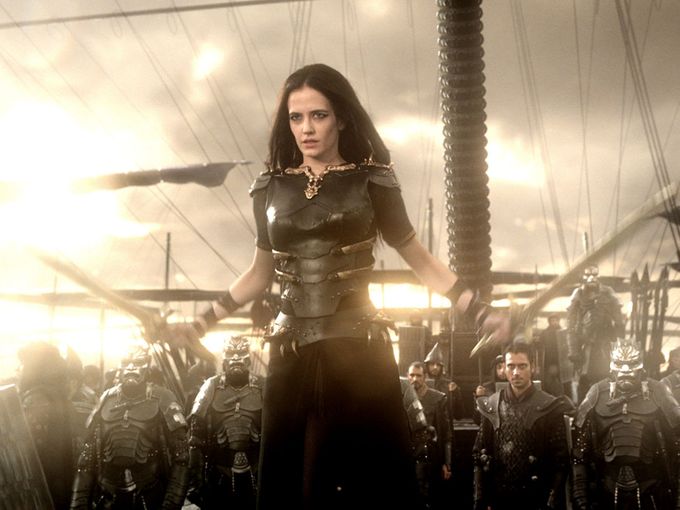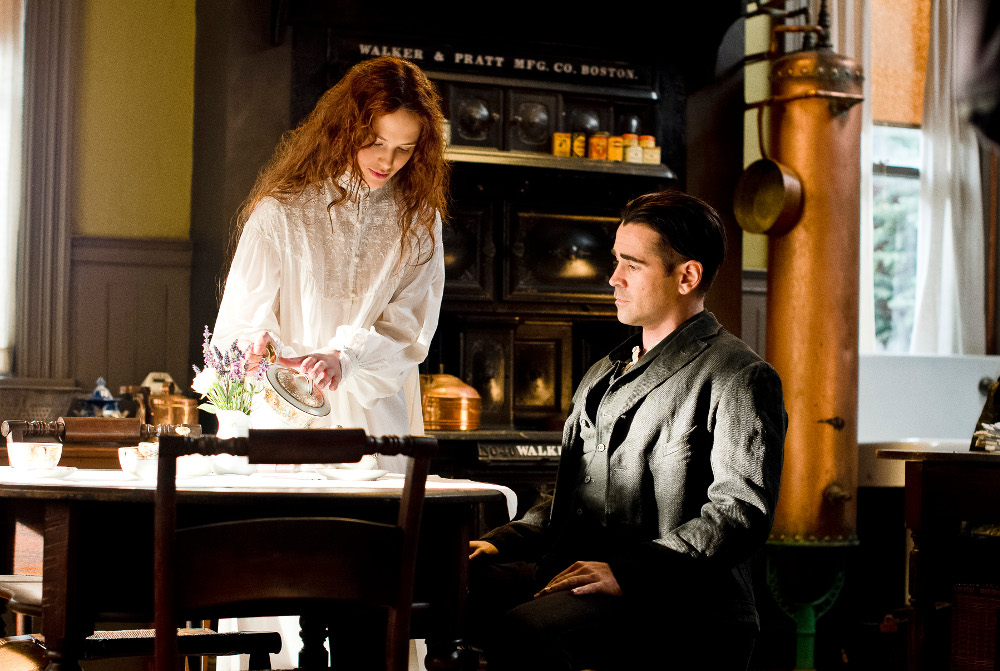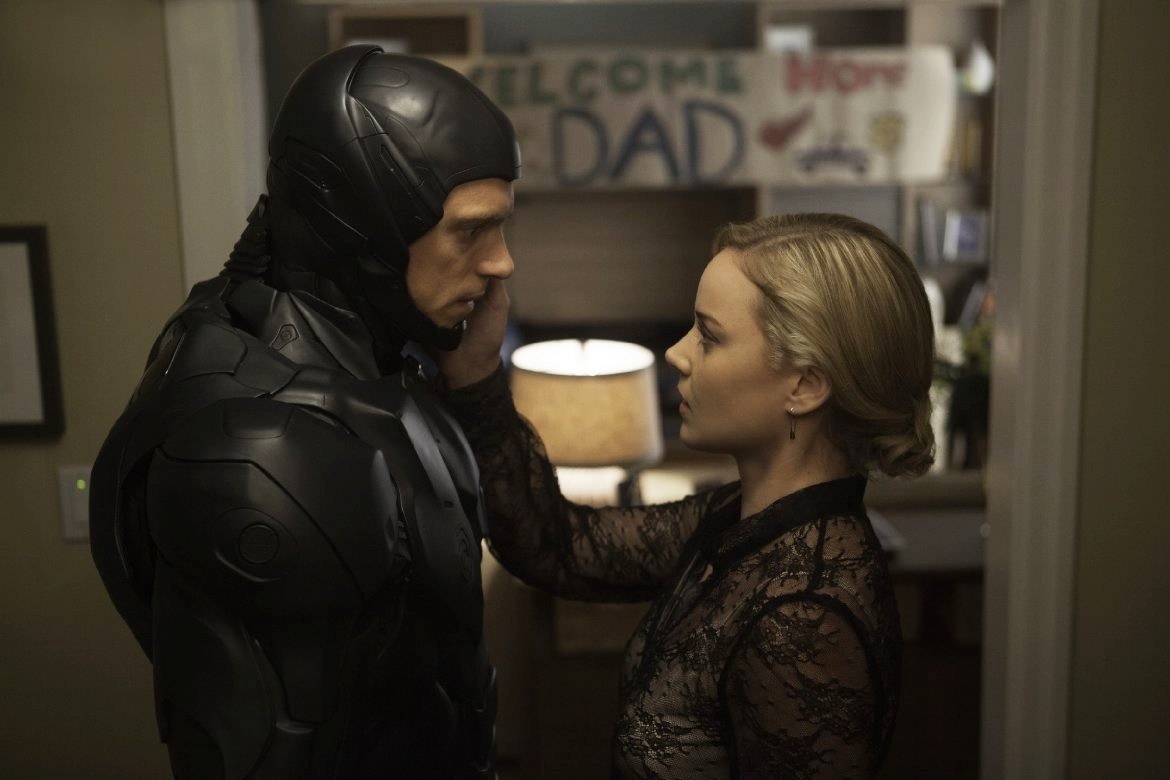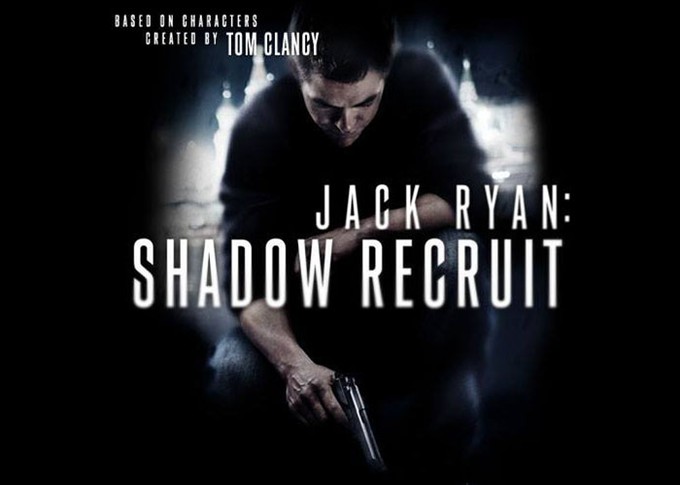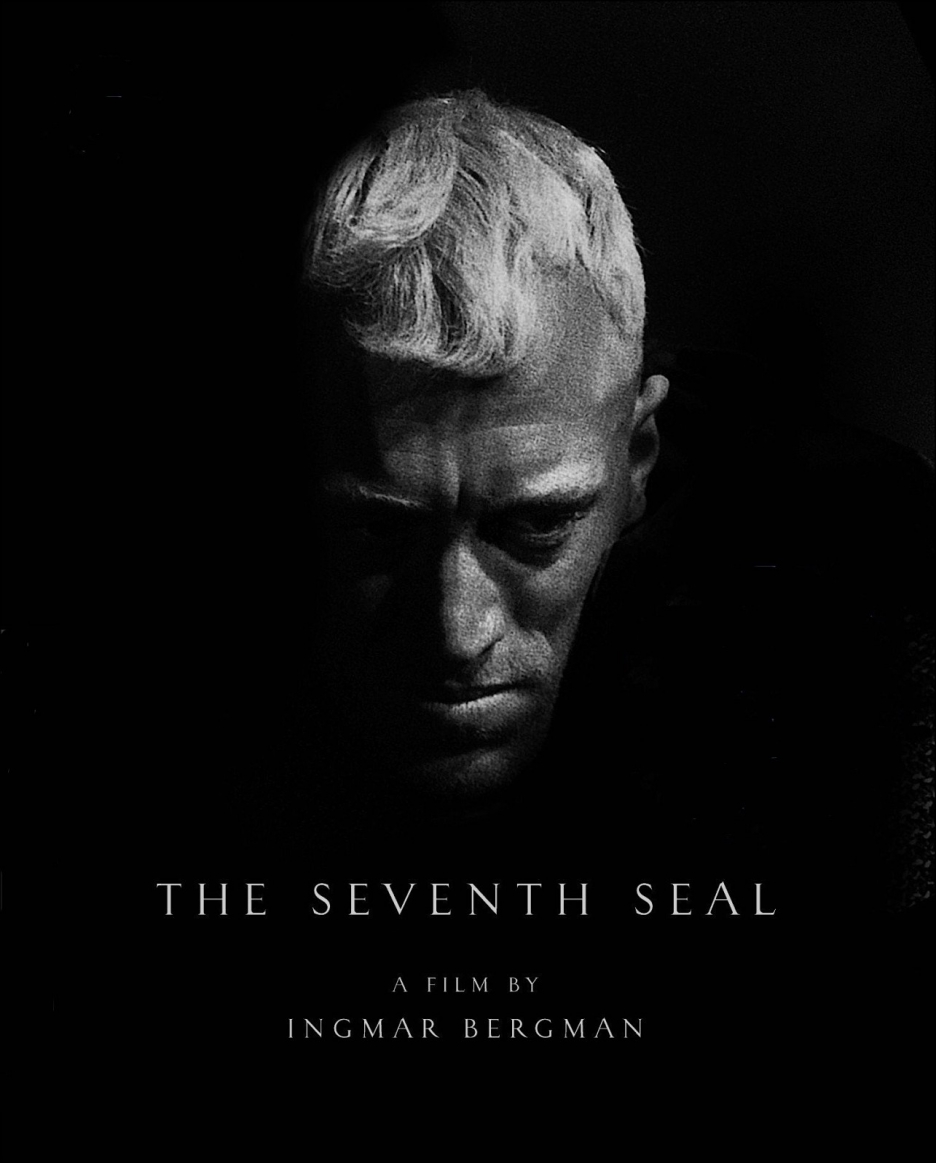Written by Andé Morgan.
300: Rise of an Empire isn’t a movie about conflict – it is conflict.
300: Rise of an Empire (300: ROAE) was released Friday, about seven years after the original film…and that’s going to be it for historical accuracy, because there is precious little in the movie.
The film was directed by Noam Murro, and the screenplay was written by Zack Snyder. Snyder also wrote and directed the original film, 300 (2006), and is the writer/director responsible for Sucker Punch (2011) and Man of Steel (2013). The events in 300: ROAE take place before, during, and after the Battle of Thermopylae depicted in the first film, and again represent creative interpretations of key battles of the Greco-Persian wars, namely, the naval battles of Salamis and Artemisium.
Sullivan Stapleton is Themistokles, an Athenian politician-soldier who ascends to power after killing Persian Emperor Darius I at the Battle of Marathon. Rodrigo Santoro and Lena Headey reprise their respective roles as Xerxes, the so-called god-king of Persia, and Gorgo, Queen of Sparta. Eva Green plays Artemisia, commander of Persia’s naval forces and advisor to Xerxes.

300 was groundbreaking. Memorable elements, like the highly stylized costumes and CGI sets, the gratuitous slow motion violence, or Gerard Butler’s beard, have been adapted or satirized in many subsequent works. Unlike the imitators, however, 300: ROAE can lay direct claim to the production design of the first film. So, how has the 300 look fared after eight years?
Well, it turns out that the sequel is not as original as the original.
Everything about 300: ROAE seems bloated. The plot is more complex, which is fine, but the pacing is a tad slow; even the action sequences drag on. The characters have more dialogue, but not much more depth. Themistokles is slightly more well rounded than Gerard Butler’s Leonidas, and Xerxes gets a backstory (daddy issues and something about an evil hermit spa).
The battle setpieces are expanded. We get wider views of Sparta and Athens, and the backgrounds hold more detail. Unfortunately, this realism runs counter to what made 300 so awesome; it was the lack of detail and the claustrophobic camera work that made 300 seem more like a dream or a hallucination than a typical swords-and-sandals blockbuster.
And the blood…oh, the blood.
The original film could be accurately described as bloody, but the sequel is blood-drenched. Ridiculously so. The slow motion decapitations and hydraulic blood-sprays in 300 were a perfect fit for the stylized violence-as-art motif of the first film, but the violence in 300: ROAE is just hokey. Think Mighty Morphin Power Rangers instead of high art.

The historic Artemisia is a fascinating figure. Artemisia I of Caria, (aka Queen Artemisia of Halicarnassus) was a Greek and the daughter of a Persian magistrate. Her husband was also a ruler; when he died, Artemisia took his throne. During the Greco-Persian war, she contributed several ships to Xerxes’ already massive navy. After distinguishing herself in combat during the battle of Artemisium, an impressed Xerxes praised her skills as a tactician and asked for her advice. The Athenians were quite upset about being beaten by a woman and offered a reward to the man who could capture her alive (so that she could be “shown her place,” I speculate).
By comparison, Snyder’s Artemisia seems to lack the inherent strength of the historical Artemisia. Instead, she exists as a damaged mechanism of vengeance. In 300: ROAE, Artemisia’s family is killed (her mother raped first) in front of her eyes by a group of Greek soldiers. Afterwards, the soldiers rape Artemisia and keep her captive as a sexual appliance in a ship’s hold. These scenes are disturbing, as they should be. Particularly so is the scene where we see the eight-year-old Artemisia (played by 10-year-old Caitlin Carmichael) battered, in chains, and surrounded by a gang of leering men.

Several years later, a catatonic Artemisia is thrown out, like refuse, onto the docks. She’s found by one of King Darius’ kindly warlords,* who takes her in and teaches her the art of war. Eventually, her immense skill as a warrior gains her Darius’ favor. After the king dies from the injury given by the hand of Themistokles during the Battle of Marathon, Artemisia manipulates the grief-ridden Xerxes (who is not at all giant or golden at this point) into disregarding his father’s dying advice by renewing the war with the Greeks. She’s also responsible for planting the “god-king” delusion in Xerxes mind. The resulting dynamic is that Xerxes recognizes his need for Artemisia’s skill, but resents her for it, and for being Darius’ favorite.
Snyder gives us a break from the bloodshed and atrocity by inserting a sex scene between the two main battles. Upset by the failures of her sub-commanders, Artemisia summons Themistokles to her chambers under the pretense of negotiation. Her true intent is to persuade him to defect. She sees his skill as almost equal to her own – between the two of them, Persia would be unstoppable. Themistokles is not having it, however, so Artemisia resorts to seduction.

The rough sex scene that follows is kind of rapey, and given Artemisia’s background, I found it uncomfortable to watch (it didn’t help that Stapleton and Green lacked chemistry and seemed a bit embarrassed to be in scene themselves). Other commentators have pointed to the fact that Artemisia both initiates and ends the act as evidence of her power, and note that it’s often unclear during the scene who is coercing who. While Artemisia has more depth than the typical fighting fuck toy (FFT), towards the end of the scene the male gaze of the camera puts Green’s breasts front and center and lingers there longer than would be necessary to establish her fearlessness. Artemisia’s costumes are also somewhat impractical and sexualized, but, to be fair, there were one or two men in the film who seemed under-dressed for the weather.
The merits of the sex scene are debatable, but I argue that sexual assault does, unfortunately, define Artemisia. As Kate Conway noted in this 2012 piece for xoJane, rape as backstory is a common trope (e.g., Girl with the Dragon Tattoo, I Spit on Your Grave) and it is often utilized by lazy writers attempting to quickly add some depth and motivation to a female character. Often, this woman is a vengeful, violent, female action character (VFAC), i.e., a “badass.” Artemisia is certainly vengeful and violent; in the film, she orders executions and suicide bombings and does quite a bit of skull-cleaving.
A predilection towards violence usually causes critics to reflexively deem a VFAC a “feminist” character. While seemingly directly opposed to the women in refrigerators trope, VFACs often end up as sidekicks or props for the main male character to use to further his own glory. In this way, VFACs usually have the equivalent effect of enforcing, rather than transcending, traditional gender roles. Additionally, VFACs are often killed off as subtle or overt punishment for their perceived masculinity (e.g., the Olga Kurkulina’s Mother Russia in Kick-Ass 2).
Surprisingly, none of the characters in the film comment on the discrepancy between Artemisia’s gender and skills as did the historical Xerxes. After the actual Battle of Salamis, according to Polyaenus, Xerxes said of Artemisia, “O Zeus, surely you have formed women out of man’s materials, and men out of woman’s.” Even Green herself seems to have internalized traditional gender stereotypes. At the red carpet premier last week, Variety quotes Green saying about Artemisia, “She’s so extreme, she doesn’t tolerate people who doesn’t [sic] follow her orders, she has no patience—completely irreverent. She’s a man.”
Unfortunately, during that interview Green also perpetuated the crazy woman stereotype, saying, “I wish I could fight like her or have the courage that she has, but she’s on the edge. She’s crazy.” A similar quote from Green in a USA Today piece reads, “She is a psychopath. I am so far from this in real life.” That article also exemplified the frustrating focus that many reviews have placed on Green’s physical appearance and clothing in the film, rather than on the development or historical context of the character.

Queen Gorgo gets more screen time and much more dialogue in 300: ROAE than in the original. However, much of this dialogue is straightforward exposition. The first fifteen minutes of the film are essentially a voice over – Gorgo giving us the film’s elevator speech. While on screen, Gorgo’s dialogue revolves around either worrying about her husband or mourning her husband. Her presence as a combatant as the Spartan cavalry rides in at the end of the film is welcome. Although – as with Artemisia – her motivation is vengeance rather than ideology or pure lust for conquest. While Gorgo is certainly a strong character, her impact on the narrative is minor.
Most disturbing is the mixed message the film conveys about rape and war. We’re shown several graphic scenes depicting the rape and murder of women as natural consequences of war in the ancient world, but Snyder must have been aware that they are just as common today. While narrating Artemisia’s backstory, Themistokles blandly states that it was his fellow Greeks who raped and murdered her mother, but he has no aversion to admitting this. Even more disconcerting, Artemisia herself presides over the sacking of Athens, during which we see several Athenian women stripped, raped, and hacked to death with short blades. Does Artemisia see this as suitable retribution? Does the memory of her mother’s suffering cause her to feel any empathy for these women? We do not know, because she makes no comment. This was a huge missed opportunity.
Similarly, just as Carmichael’s portrayal enables us to feel something of the pain experienced by the young Artemisia as she watched atrocity befall her family, we can also feel the pain experienced by Calisto (Jack O’Connell) as he witnessed Artemisia’s arrow pierce his father, Scyllius’ (Callan Mulvey) heart. Yet, despite what we see, underneath the talk of glory and freedom there is no coherent discussion of the futility of war and no allusion to the mental and physical scars left on the combatants.
Artemisia’s death scene articulates the film’s conflicted non-commentary on rape and war. Bloody, beaten, and anticipating the imminent arrival of the Spartan ships, we see Artemisia on her knees in front Themistokles, the point of his sword at her throat. Rather than accept Themistocles offer of escape, Artemisia chooses death. She feigns attack, and Themistokles stabs her through her lower abdomen. In excruciating detail, we see the sword sawing back and forth through her body. As she pulls Themistokles close, we see an almost orgasmic look cross her face.
While some have interpreted this scene as positive, her refusal to flee or to submit to capture a final example of her autonomy and self-determination, I argue that it instead serves as a capstone, an indirect culmination of the sexual assaults of her childhood, and a direct, forced (by Themistokles) culmination of the sex act that she had earlier delayed in her chambers.
300: ROAE is not a feminist movie, and that is not surprising given the film’s genre. The film fails the Bechdel Test; Gorgo and Artemisia never share a scene nor speak to other women. Snyder’s Artemisia is ultimately a construct of typical VFAC tropes and, despite a skilled and enthusiastic portrayal by Green, doesn’t do the historical Artemisia justice. Moreover, it’s disappointing that Snyder, having chosen rape as a shortcut to an interesting character, didn’t take the opportunity to also provide relevant commentary on the contemporary use of rape as a tool of war.
If you’re looking for buckets of blood, CGI naval battles, and fancy costumes, check it out. If you were hoping for an authentic adaption of the story of one of the ancient world’s most interesting women, you’ll be better off to stay home and curl up with a copy of The Histories instead.
*Coincidentally, the same warlord that Leonidas introduced to the bottom of a pit in the original film while saying the now infamous line, “Watch your step!”
Andé Morgan lives in Tucson, Arizona, where they write about culture, race, politics, and LGBTQ issues. Follow them @andemorgan.
